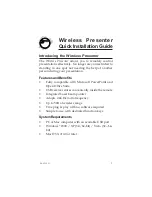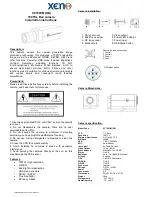
Cheetah Python Cameras User Manual | CoaXPress (CXP) Interface
August 27, 2019
Page
71
of
86
Rev 1.0
Transfer Function Correction
The user-defined Lookup Table (LUT) feature allows you to transform the original video data
into any arbitrary value. The LUT is designed to transform any 12-bit value into any other
12-bit value. For the 10-bit Python sensor, the camera multiplies the 10-bit pixel data by 4
to get 12-bit pixel data for input into the 12-bit LUT. After the 12-bit LUT transforms the
data, the camera divides the 12-bit data by 4 to get 10-bit pixel values for output to the
camera interface (refer to the following figure). The camera supports two separate lookup
tables, each consisting of 4096 entries, with each entry being 12 bits wide. Both LUTs are
factory programmed with a standard Gamma 0.45 and available for modifications. You can
generate and upload a custom LUT using the Imperx Upload Utility application.
Figure 45:
Look up table
Standard Gamma Correction
The image generated by the camera is normally viewed on a monitor and does not have a
linear transfer function, that is, the display brightness is not linearly proportional to the
scene brightness (as captured by the camera). As the object brightness is lowered, the
brightness of the display correspondingly lowers. At a certain brightness level, the scene
brightness decrease does not lead to a corresponding display brightness decrease. The
same is valid if the brightness is increased. This is because the display has a nonlinear
transfer function and a brightness dynamic range much lower than the camera.
The camera has a built-in transfer function to compensate for this non-linearity called
gamma correction. Gamma correction can also help map the camera’s wider dynamic range
to the limited dynamic range of the display. If enabled, the video signal is transformed by a
non-linear function close to the square root function (0.45 power) as shown the following
formula. In the digital domain, this is a nonlinear conversion from 12-bit to 12-bit.
Output signal [V] = (input signal [V])
0.45
(1.4)
Figure 46:
Gamma corrected video signal
















































